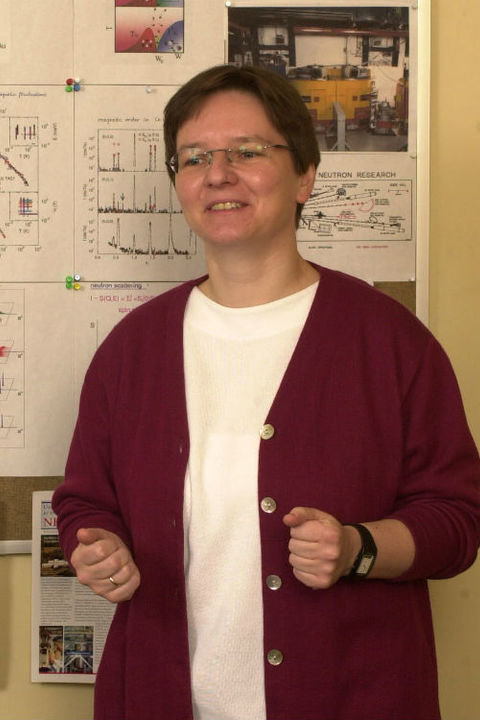
Almut Schroeder
Biography
My favorite research activities concentrate on strongly correlated electron systems, like transition metal oxides and rare earth alloys. The tools used to study the electronic and magnetic properties are low temperature "bulk" measurements like transport, thermal and magnetization measurements and, in particular, spectroscopic measurements like neutron scattering.
The physics of a huge ensemble of interacting electrons ("strongly correlated electrons"), present in solid state materials, can be understood in some limiting cases, but remains still a fascinating challenge and is one of the main research areas today in condensed matter physics. Notable examples are high-temperature superconductors and heavy-fermion compounds, where the occurrence and nature of superconductivity is one of the central — still unresolved — questions. Meanwhile it has become clear that even the normal-conducting phase (as a "strange" metal) is anomalous, showing distinct deviations from our fundamental view of metals.
The realization that this unconventional behavior occurs at the borderline of different competing phases, depending on slight changes of the interactions, makes necessary the study of the nature of these neighbor phases and especially the transition in between them. Since the transition occurs at zero temperature, we have to deal with a quantum phase transition accompanied by quantum critical fluctuations, a topic of current interest. The key method to "observe" especially magnetic fluctuations is inelastic neutron scattering.
 The Fig. opposite is the phase diagram of the heavy fermion alloy CeCu6-xAux which develops antiferromagnetic order for x > 0.1. The inset shows the neutron scattering intensity at x = 0.1 for different temperatures T (0.05 K - 4 K) and energy transfers E (0.02 meV - 1.5 meV) merging to a single simple curve on this scaling plot. [see A. Schroeder et al., Nature 407, 351 (2000)].
The Fig. opposite is the phase diagram of the heavy fermion alloy CeCu6-xAux which develops antiferromagnetic order for x > 0.1. The inset shows the neutron scattering intensity at x = 0.1 for different temperatures T (0.05 K - 4 K) and energy transfers E (0.02 meV - 1.5 meV) merging to a single simple curve on this scaling plot. [see A. Schroeder et al., Nature 407, 351 (2000)].
This Fig. presents e.g. a simple scenario, the transition from a paramagnetic into an antiferromagnetic metal provoked by a change of concentration x. Neutron scattering measurements were able to derive the quantum-critical magnetic fluctuations which allows a new unusual but extremely simple description of this complicated material at the quantum critical point, where magnetic order starts to develop.
In the search for novel states of matter, the experimental approaches include
- sample preparation (growth of f- and d-electron alloys),
- precise low temperature transport, magnetic, and caloric measurements in a dilution refrigerator, and
- neutron scattering experiments, performed at spectrometers located at different research facilities (like NIST (MD), IRIS (U.K.), Oak Ridge, (TN)).
Joining the program offers a diversity of skills in material science, cryogenics, electronics, installation and controlling of laboratory experiments, data acquisition, contact to large scale research facilities, besides doing fundamental physics of high current interest, which also has an impact on novel materials design for applications.
